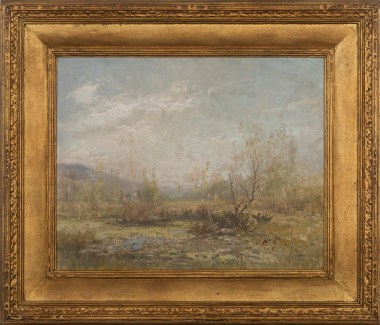
Robert Crannell Minor was born in New York City on April 30, 1839, and as a young man worked as a bookkeeper in New York City but decided to study art in his early thirties. After studying in New York with painter Alfred Cornelius Howland, Minor went abroad in 1871 to continue his artistic education. He visited various galleries in England before traveling to Barbizon, France, where he studied under Diaz. He later studied in Antwerp under Joseph Van Luppen and Hippolyte Boulenger. In 1874, he was vice president of the Société artistique et littéraire of Antwerp.
Minor returned to the United States in 1874, and opened a studio in New York. He painted for many years out of his studio in the Old University Building of New York University. Painting in the Adirondack Mountains and later in Waterford, Connecticut, Minor soon became known for his landscapes resembling the Barbizon School. Under the influence of George Inness and Alexander Helwig Wyant, he also began to paint in a Tonalist style. From the 1890s until his death, Minor exhibited frequently with the Tonalists in New York. In 1897, he was elected a member of the National Academy of Design, New York. In 1900, Minor achieved the height of his success at the historic William T. Evans sale in 1900, where his painting The Close of Day (private collection) fetched $3,050, the highest price for a landscape by a living American painter at that auction.
Over the course of his lifetime, Minor was a member of the Society of American Artists and the Salmagundi Club. He exhibited in New York, Brooklyn, Chicago, and elsewhere in the United States, as well as in the Royal Academy of London and the salons of Paris and Antwerp. He died at his home in Waterford, Connecticut, on August 4, 1904.